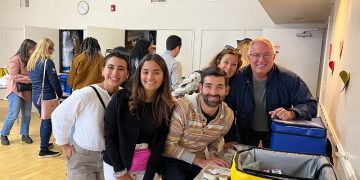It’s all the rage these days to say that politics has been changed enormously by the combination of the “top two” primary election system and voters’ increasing reluctance to declare allegiance to either major political party.
While it’s true these phenomena have made some changes, it’s also true that some of the basics remain.
Among the changes: In districts where either Democrats or Republicans have very large voter registration margins, top two can and has produced interesting intra-party matchups. The presence of the minority party’s voters – whichever party is in the minority in a given district – causes November winners to conduct themselves in a more moderate manner than they otherwise might.
But some things remain just as they were, and that has never been better demonstrated than in the February San Diego special election making former City Councilman Kevin Faulconer, a Republican, mayor of a city carried by Democrat Barack Obama by a 25 percent margin in the last presidential election.
A post-election analysis conducted for the non-profit Voice of San Diego news site by Ohio State University political scientist Vladimir Kogan, a former staffer at that site, indicates this happened because of a seemingly ancient phenomenon: Republicans turn out much more heavily than Democrats, especially in special elections.
Faulconer, a Republican now trying to govern as a moderate, managed to win in a city where Democrats have a 13 percent voter registration advantage.
Kogan’s analysis showed that only 36 percent of voters who went for Obama in 2012 went for Democrat David Alvarez for mayor, while 63.5 percent did not cast ballots in the mayoral election.
By contrast, 76 percent of those who voted two years ago for Republican Mitt Romney for president chose Faulconer, while only 23 percent did not vote in the special mayoral election.
Some other statistics Kogan mined from the February vote demonstrate what political professionals have long known: Democrats turn out in far greater numbers for regularly scheduled runoffs than they do for either primaries or special elections.
That’s one big reason some Democrat-dominated cities have lately rescheduled their municipal elections to coincide with the November vote and it’s also why the Democratic-controlled state Legislature voted to move all initiatives that quality for a ballot via voter signatures into November. They figure the causes they favor stand a far better chance at that time.
The San Diego result also reinforces the reality that a disgraced politician can hurt whoever from his own party tries to succeed him. Alvarez, for example, has never been associated with wrongdoing, but was trying to hold onto the seat won in 2012 by fellow Democrat Bob Filner, chased from office in a groping and sexual harassment scandal.
Only 44 percent of the people who voted for Filner went for Alvarez this year, while 55.5 percent didn’t cast ballots. Meanwhile, 65 percent of those who picked 2012 loser Carl DeMaio (now running for a San Diego seat in Congress) voted for Faulconer and just 31.5 percent of DeMaio voters did not participate.
No one can say for sure that had the February vote somehow been delayed nine months until November, things would have gone differently. But for sure, Democrats would have had a better chance.
For there will be other candidates, other causes on the ballot then that they care about. But even with a big push from labor unions, Democrats never generated much enthusiasm in February.
Meanwhile, Republicans salivated over the opportunity to recapture a mayor’s office that had been almost exclusively theirs for decades.
Does all this mean anything elsewhere, where voters are not as accustomed to Republican success as they have been in San Diego? Maybe. For sure, Democrats long have wanted to avoid contesting anything important anytime other than November, so they clearly knew the danger to them in a situation like what San Diego saw in February.
It all goes to show that, as humorist Finley Peter Dunne’s comic character Mr. Dooley pointed out more than a century ago, “The more things change, the more they stays the same.”












